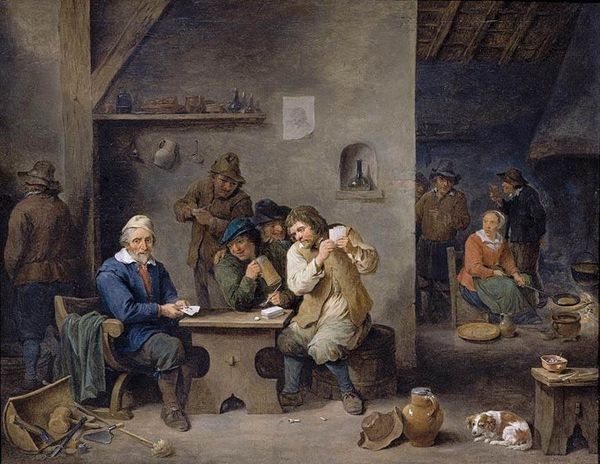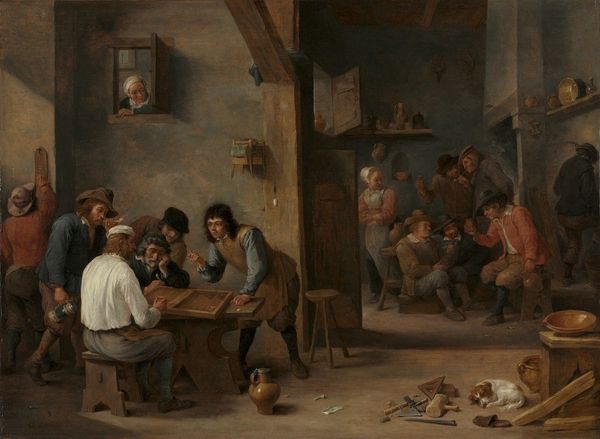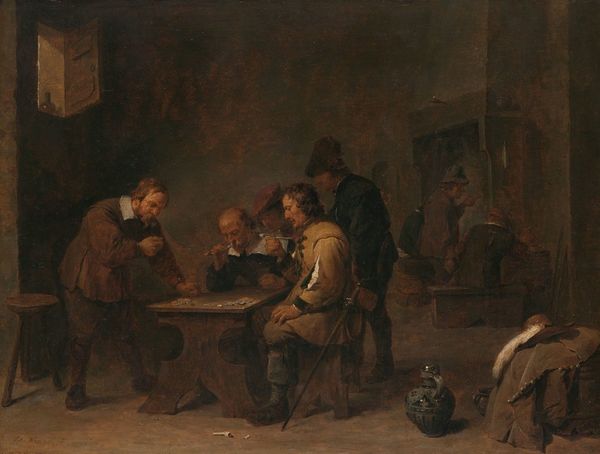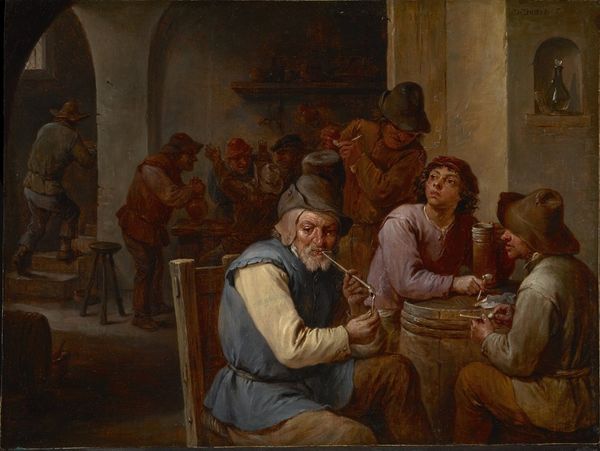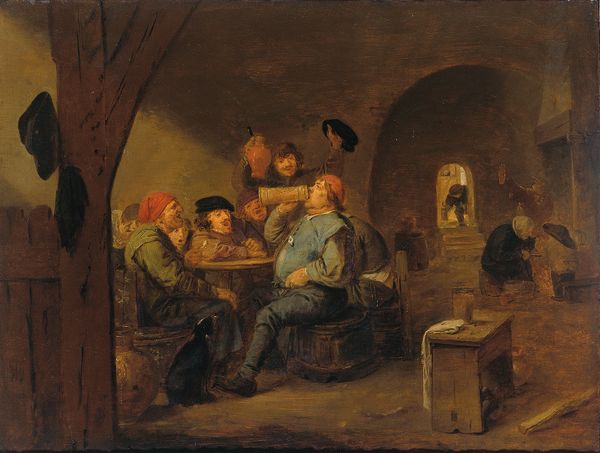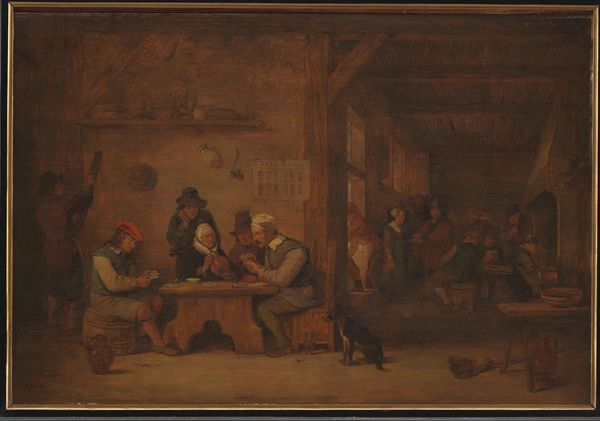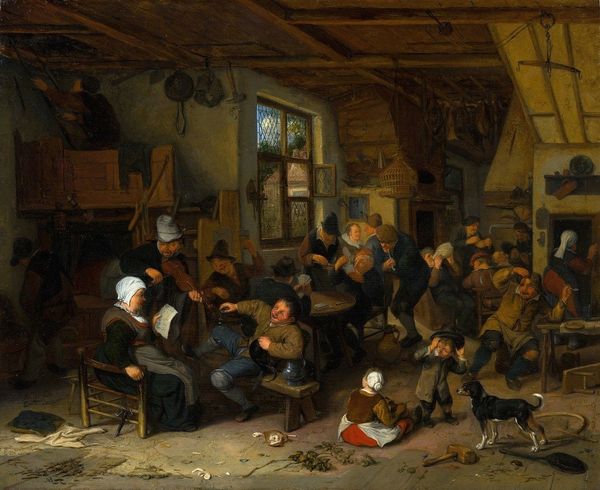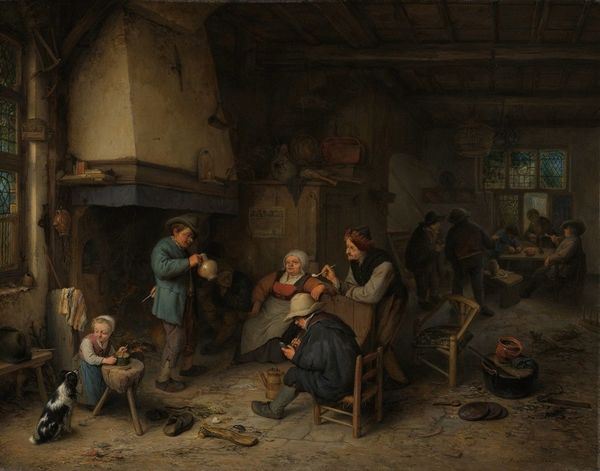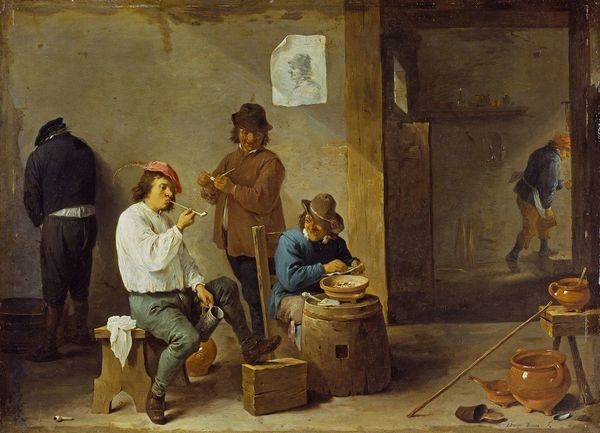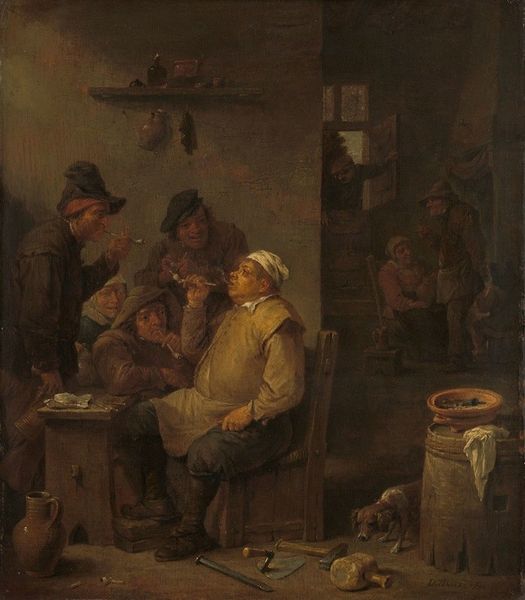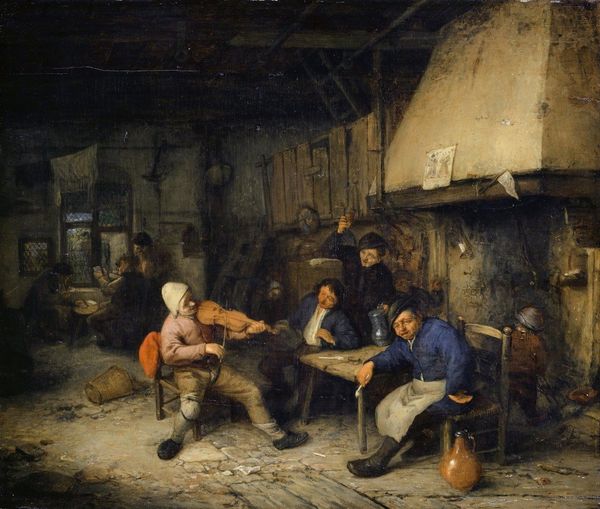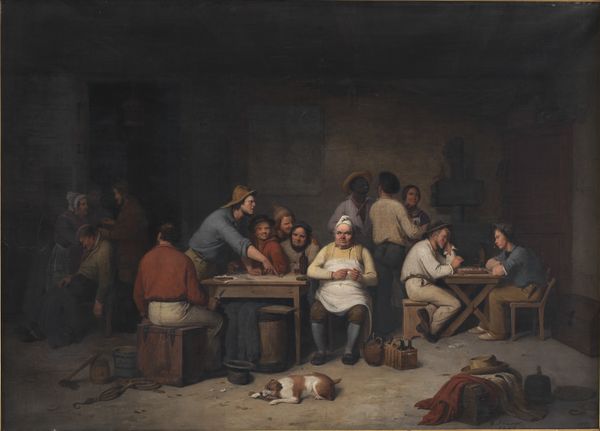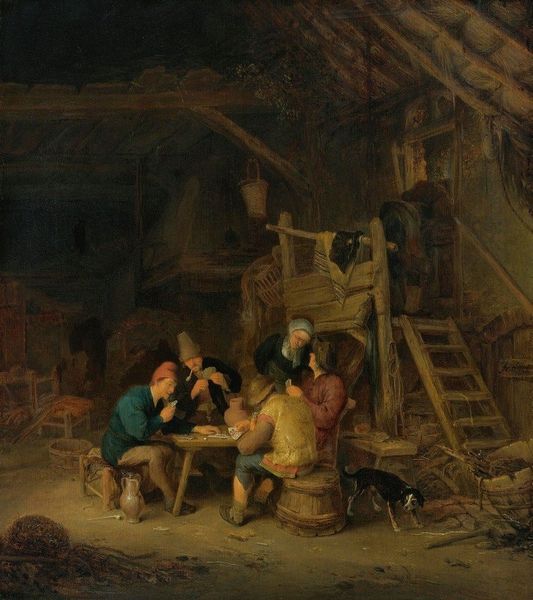
painting, oil-paint
#
figurative
#
narrative-art
#
baroque
#
dutch-golden-age
#
painting
#
oil-paint
#
figuration
#
oil painting
#
cityscape
#
genre-painting
#
portrait art
#
realism
Copyright: Public Domain: Artvee
Editor: Here we have "Tavern Scene" by David Teniers the Younger, painted in 1658 using oil paint. The earthy tones and crowded composition create a somewhat chaotic yet intimate atmosphere. I'm curious, what can you tell us about this kind of genre painting within its historical context? Curator: Genre scenes like this, especially in the Dutch Golden Age, weren’t merely about depicting everyday life. They served as social commentaries, often reinforcing or questioning societal norms. This tavern isn't just a place of leisure, it’s a microcosm of the community. Consider the figures: are they simply enjoying themselves, or is there a commentary on idleness, perhaps even a subtle moral judgment implied in their activities? Look closely, what social messages might Teniers be embedding in the scene? Editor: It does seem like a commentary. Perhaps a subtle one though? The presence of what seems like a sleeping drunk in the back seems particularly pointed. Do these tavern scenes generally carry a consistent moral message, or did interpretations vary? Curator: The interpretation of these paintings was, and remains, quite varied. Some saw these taverns as places of sin and moral decay, reinforcing conservative viewpoints. Others might have seen them as representing the common man and community life, perhaps even gently satirizing the upper classes through the comparison. And consider the role of the art market itself. Who were the primary consumers of such works, and how did that influence the types of narratives that were deemed acceptable or even desirable? Editor: That’s a really interesting point, about the influence of the market! So, by considering who was buying these paintings and what messages resonated at the time, we gain a deeper understanding. Thanks, this really makes me think about how art actively participated in shaping social ideas. Curator: Precisely. It's about recognizing that art doesn't exist in a vacuum, but actively engages in the ongoing conversation of culture and power. Seeing beyond the immediate subject matter gives a richer interpretation.
Comments
No comments
Be the first to comment and join the conversation on the ultimate creative platform.
